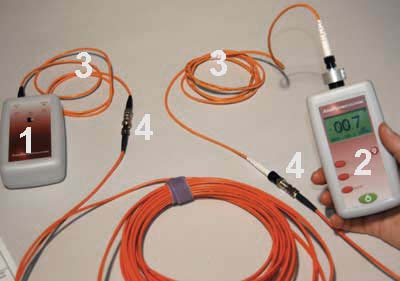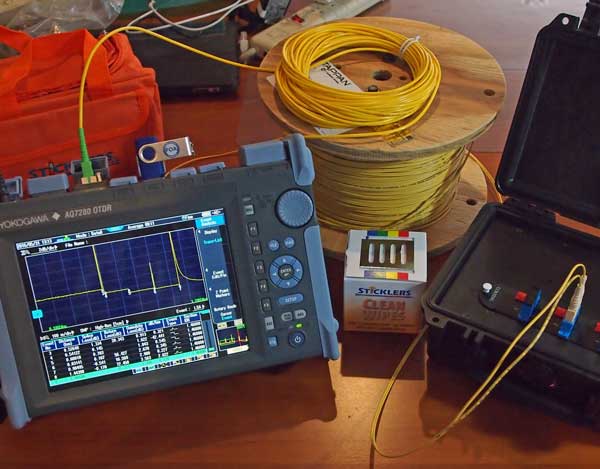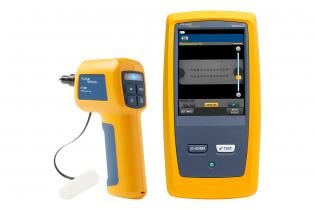Optical fibre testing equipment ensures precision in fibre network installations.
Discover the Significance of Optical Fiber Screening in Modern Telecom
In the world of modern telecommunications, the significance of optical fibre testing can not be overemphasized, as it offers as the backbone for ensuring network dependability and performance. What are the certain benefits that routine testing deals, and exactly how might it form the future landscape of telecommunications?

Understanding Optical Fiber Testing
Optical fiber screening is an essential procedure in telecoms that makes sure the integrity and performance of fibre optic networks. This testing incorporates a series of treatments made to assess the physical and useful qualities of optical fibers - ofda. Secret criteria examined include optical power loss, bandwidth capacity, and mistake location, which are necessary for preserving high-grade interaction web links
The screening procedure typically includes using specific devices such as Optical Time-Domain Reflectometers (OTDR) and Optical Power Meters. OTDRs are employed to determine and characterize mistakes, mates, and adapters within the fiber, while power meters gauge the transmitted light signal strength to identify efficiency.
In addition, screening is conducted at numerous stages, including during setup, maintenance, and troubleshooting, to make sure that the network fulfills industry standards and operational demands. Compliance with criteria set by organizations like the International Telecommunication Union (ITU) and the Telecommunications Industry Association (TIA) is critical.
Advantages of Normal Evaluating
Regular screening of optical fibres returns countless benefits that substantially boost network dependability and performance. One of the main benefits is the very early detection of potential issues, such as breaks or deterioration in the fibre, which can result in costly downtime if left unaddressed (fibre testing equipment). By identifying these problems proactively, telecoms providers can minimize service interruptions and guarantee constant connection for their customers
Additionally, routine testing helps to preserve the stability of signal quality. As optical fibres age, their efficiency can be influenced by factors such as environmental problems and physical tension. Regular assessments permit for the tracking of signal loss and general transmission efficiency, making sure that the network operates at ideal degrees.
An additional substantial benefit is compliance with industry requirements. Routine screening supports adherence to regulatory needs, thereby mitigating lawful and financial risks related to non-compliance. Furthermore, it improves the total life-span of the fibre infrastructure by helping with prompt repair and maintenance.

Usual Examining Methods
Checking optical fibres employs different techniques to guarantee the stability and performance of telecoms networks. Amongst one of the most usual methods is Optical Time Domain Reflectometry (OTDR), which analyzes the whole length of the fibre by sending out a pulse of light and gauging the representations brought on by flaws or breaks. This technique gives in-depth details concerning the place and extent of faults.
One more widespread method is using Optical Power Meters, which gauge the amount of light transferred through the fibre. This technique assists determine the loss of signal stamina, guaranteeing that it meets market standards. In Addition, Aesthetic Fault Locators (VFL) are employed to recognize breaks or serious bends in the fibre by predicting a noticeable laser light into the cord.
Insertion loss screening is additionally critical, as it quantifies the loss of signal power arising from links and interlaces within the network. Moreover, the usage of Polarization Mode Diffusion (PMD) screening examines the effect of fibre attributes on signal integrity.
Each of these methods plays an important duty in preserving the performance and dependability of optical fiber networks, inevitably adding to seamless telecommunications procedures.
Effect On Network Efficiency
The stability and performance of optical fiber networks directly affect general network performance. In modern telecoms, the performance of data transmission counts greatly on the high quality of the optical fibers used. Any kind of destruction in the fibre's problem-- whether because of physical damage, contamination, or excessive flexing-- can bring about enhanced depletion and signal loss, considerably impacting data honesty and speed.
Regular optical fiber screening is vital to recognize and rectify possible concerns before they materialize as home network failures or downturns. Techniques such as Optical Time Domain Reflectometry (OTDR) and insertion loss screening enable service technicians to measure the performance of fiber links accurately. These tests not only evaluate the physical condition of the fibers yet additionally visit here guarantee compliance with market requirements, thereby guarding the network's integrity.
Moreover, a properly maintained optical fiber network contributes to decreased functional prices and enhanced consumer contentment, as end-users experience less disruptions and greater information rates. Eventually, the focus on extensive optical fiber screening methods works as a keystone for maintaining robust telecoms facilities, making certain that company can meet the expanding needs for bandwidth and connection in today's digital age.
Future Fads in Evaluating
As we look ahead, advancements in innovation are positioned to reshape optical fiber testing in telecoms. The increase of automation and expert system (AI) is expected to improve the efficiency and precision of testing procedures. Automated screening systems can carry out thorough analyses with minimal human treatment, significantly minimizing the possibility for errors and accelerating time-to-deployment.
Additionally, the assimilation of device learning formulas will enable predictive upkeep, enabling network carriers to anticipate possible concerns before they intensify into failures. This positive technique not only enhances network dependability however additionally maximizes functional prices.
One more emerging fad is the advancement of mobile testing devices that supply real-time evaluation - optical fibre testing equipment. These devices will equip professionals to perform on-site diagnostics rapidly, assisting in quicker resolutions and boosting solution top quality
The development of 5G networks additionally demands the evolution of testing techniques. As data transfer needs increase, typical screening strategies may no longer are enough. Ingenious solutions such as optical time-domain reflectometry (OTDR) and progressed spectral evaluation will end up being vital in making sure the honesty and efficiency of high-speed links.

Final Thought
To conclude, optical fiber testing is essential for making certain the integrity and dependability of modern telecoms networks. Routine testing techniques not just help recognize possible issues such as signal loss and mistakes but likewise add to boosted network efficiency and consumer satisfaction. As the demand for see smooth connectivity continues to expand, the fostering of advanced screening methods will certainly play an important duty in preserving premium network requirements and supporting the progressing landscape of telecommunications.